
The dun-bar is a moth of the family Noctuidae. It is a common Palearctic species.

Arctornis l-nigrum, the black V moth, is a moth of the family Erebidae. The species was described by Otto Friedrich Müller in 1764. It is found in the Palearctic realm and Asia.

Cosmia is a genus of moths of the family Noctuidae.

Cosmia diffinis, the white-spotted pinion, is a moth of the family Noctuidae The species was first described by Carl Linnaeus in 1767. It is found in central and southern Europe, to the north it is found up to central England and the southern parts of the Netherlands. There is a disjunct population in Gotland. To the south, it is found down to Spain, Italy, Russia, northern Greece and Bulgaria. In the east, it is found as far as Lithuania and the Black Sea.

The lesser-spotted pinion is a moth of the family Noctuidae. It is found in central and southern Europe, north to Great Britain, Denmark, southern Sweden up to Saint Petersburg. East, its range extends through northern and Central Asia up to Japan. It is also found in north-western Africa.

Cosmia pyralina, the lunar-spotted pinion, is a moth of the family Noctuidae.
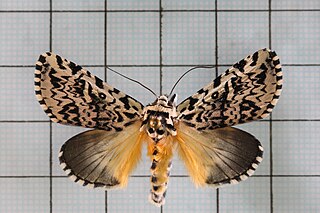
Trichosea champa is a moth of the family Noctuidae first described by Frederic Moore in 1879. It is found in the Himalayas, north-east India, Sri Lanka, China, Taiwan, Japan, and Russia.
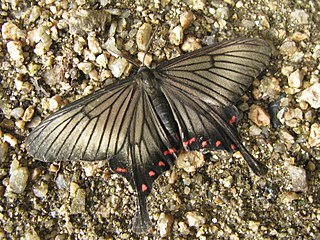
Epicopeia hainesii is a moth of the family Epicopeiidae, first described by William Jacob Holland in 1889. It is found in the Korean Peninsula, Japan and Taiwan.
Proteuxoa restituta is a moth of the family Noctuidae. It is found in the Australian Capital Territory, New South Wales and Queensland.

Monema flavescens is a moth of the family Limacodidae. It is found in Japan, Korea, the Russian Far East, China, Taiwan, Philippines and Hyderabad (India), Kerala(India).
Dichomeris acuminata, the alfalfa leaf tier, is a moth of the family Gelechiidae. It was first described by Otto Staudinger in 1876. It is a widely distributed species, being known from India, Myanmar, and Sri Lanka southwest to the Seychelles, Mauritius and Réunion and on to Egypt, east and South Africa and southern Europe. Eastward from India it extends through Indonesia and Malaysia to Taiwan and Australia. It is also found in Japan, the West Indies, North America and Hawaii.

Cosmia calami, the American dun-bar moth, is a moth in the family Noctuidae. It is found in North America, including California, Georgia, Massachusetts, Minnesota, New Hampshire, New Jersey, Oregon, Pennsylvania, Tennessee, Washington and Wisconsin.

Calliteara lunulata is a moth of the family Erebidae. It is found in the Russian Far East, Japan, China and Taiwan.
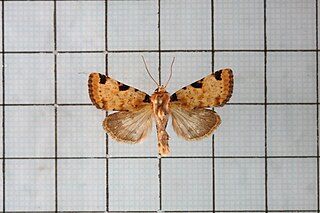
Cosmia poecila is a moth of the family Noctuidae. It is found in Taiwan.

Dysstroma cinereata is a moth of the family Geometridae. It is found in eastern Asia.

Kunugia undans is a species of moth in the family Lasiocampidae. It is found in Russia, Japan, China, Taiwan, Vietnam, South Korea, Bhutan.

Mesastrape fulguraria is a moth in the family Geometridae. It is found in Japan, Taiwan and China.
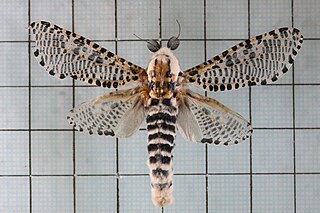
Zeuzera multistrigata is a moth of the family Cossidae. It is found in India, Nepal, Myanmar, Bangladesh, Sri Lanka, Vietnam, Thailand, China, Korea, Russia, Japan and Taiwan.
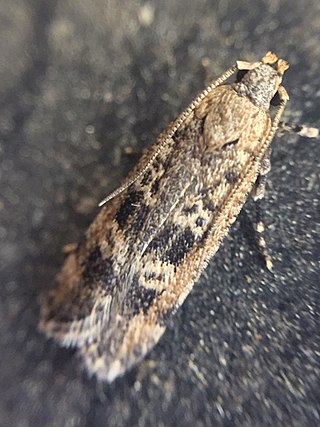
Anisoplaca cosmia, also known as the Norfolk Island hibiscus moth, is a species of moth in the family Gelechiidae. It was described by John David Bradley in 1956 and is native to Norfolk Island but has become established in New Zealand.

Cosmia praeacuta is a species of cutworm or dart moth in the family Noctuidae.

















